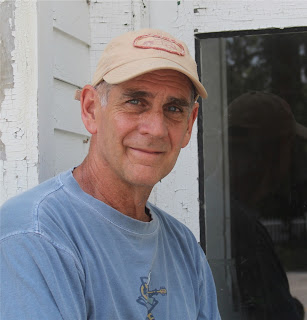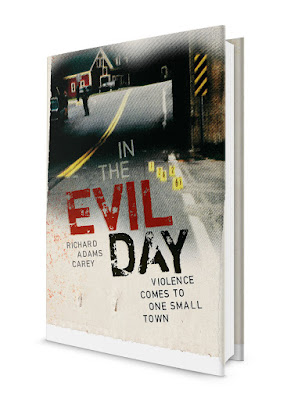by Alison Bass
author of Getting Screwed: Sex Workers and the Law
Charla Hathaway, who has a PhD in sexology and looks like a very sexy grandma (think Susan Sarandon in the movie Tammy), helps couples re-ignite the sexual spark in their marriages through erotic exercises and massage. But a number of weeks ago, PayPal froze Hathaway’s account, locking up thousands of dollars of her earnings and forcing her to find alternative ways to accept client payments.
Hathaway’s experience is far from an isolated case, civil rights lawyers say. At a recent conference in Washington, D.C. a First Amendment attorney said that PayPal’s actions are part of a broader effort by government and law enforcement officials to crack down on companies that provide financial services for sex workers and others in the adult industry. Earlier this year, an Illinois prosecutor pressured MasterCard and Visa into refusing to process transactions for Backpage, an online website that posts ads for sex workers. At a time when much of the developed world has decriminalized sex work—with Amnesty International recently calling for decriminalization as the answer to much of the violence and abuse that surrounds commercial sex—the United States appears to be lurching in the opposite direction toward harsher criminal and civil penalties for sex workers and those such as Hathaway who operate in the gray area between sex work and therapy.
This crackdown, advocates say, stems from the current hysteria around sex trafficking, which has been whipped up by grossly inaccurate statistics and media accounts of young girls forced into the sex trade by evil traffickers (once known as evil pimps). While the truth about trafficking is far more nuanced and complex than this (as I discovered in researching my book, Getting Screwed: Sex Workers and the Law), a coalition of conservative religious groups and feminists have used the hysteria to successfully push for a slew of anti-trafficking laws. But these measures appear to be hurting the very people they are supposed to protect. Not only are police in many states using trafficking laws to arrest adults engaged in consensual sex, but the laws are making things worse for teenagers selling survival sex on the streets of American cities.
Cases in point:
- Since the original trafficking protection law was passed in 2000, the total number of arrests for underage prostitutes has actually increased. Under this law, juveniles, many of whom have run away from homes where they were being molested or abused, are supposed to be treated as victims. Yet many end up being arrested, and social workers who work with these youth say they are often re-traumatized by the criminal justice system.
- Instead of targeting traffickers and exploitative pimps, police in some cities are harassing the most marginalized people in the sex trade: minority and transgender sex workers. Washington, DC, police recently raided several local brothels and arrested 16 alleged trafficking victims. In actuality, they were all African-American or Latino sex workers, age 19 to 26, who were not being trafficked, according to Cyndee Clay, executive director of Helping Individual Prostitutes Survive (HIPS), a nonprofit outreach organization in Washington.
- In Alaska, Karen Carpenter, the owner of an Anchorage massage parlor (where she worked with two other women) was charged in 2013 with sex trafficking and managing a place of prostitution. According to the Alaska News, she was found guilty of sex trafficking in the third degree (a felony), even though the women who worked with her were doing sex work by choice.
- In Virginia, one of the sex workers whom I profile in my book, a beautiful bi-racial woman whose professional name is Joi Love, was arrested and accused of trafficking another woman. The other woman, who had been arrested in a prostitution sting by police, turned Joi and her boyfriend in to avoid being charged herself. Richmond police pressured Joi to testify against her boyfriend in order to have her own trafficking charge dismissed, but she refused. Joi ultimately pled guilty to a misdemeanor prostitution charge in order to have the more serious charges against her dropped.
- Illegal immigrants who are arrested and charged with prostitution are often deported regardless of whether they are doing sex work by choice. A 2010 study of 1,515 municipal police departments in the U.S. found that even immigrants who said they were trafficked were more likely to get deported than be designated as victims deserving of a special visa and support services.
- The way state and federal anti-trafficking laws are written, most of the funding goes to law enforcement and not into services that can help underage and adult sex workers with housing, education, counseling and support so they can stop doing sex work if they so choose.
 The problem with our current approach to sex work is that it is both counterproductive and ineffective from a public health and safety standpoint. As I’ve blogged about here and here, laws that criminalize the sale and purchase of sex only make working conditions more dangerous for sex workers (and other women) and contribute to the spread of sexually transmitted diseases like HIV. A 2015 study confirms this cause and effect. It is no coincidence that the Netherlands, which decriminalized sex work in the 1970s and legalized it in 2000, has the lowest rate of HIV in the world. Sex workers experience much less violence in that country as well.
The problem with our current approach to sex work is that it is both counterproductive and ineffective from a public health and safety standpoint. As I’ve blogged about here and here, laws that criminalize the sale and purchase of sex only make working conditions more dangerous for sex workers (and other women) and contribute to the spread of sexually transmitted diseases like HIV. A 2015 study confirms this cause and effect. It is no coincidence that the Netherlands, which decriminalized sex work in the 1970s and legalized it in 2000, has the lowest rate of HIV in the world. Sex workers experience much less violence in that country as well.As the experience in the Netherlands and other countries shows, when prostitution is not criminalized, sex workers are better able to negotiate safe sex (i.e. sex with condoms) and more comfortable reporting violent clients and abusive pimps to the police. By contrast, after Sweden criminalized the purchase of sex in 1999, sex workers were forced into more dangerous, isolated spaces and were less able to negotiate safe sex with clients who feared being arrested. While the Swedish law has reduced the number of street walkers in that country, the overall numbers of sex workers there has not declined nor has the incidence of sex trafficking, according to reports prepared for the Swedish government.
Similarly, while anti-trafficking advocates argue that closing down Backpage would help fight trafficking, in reality, denying sex workers the ability to advertise on Backpage and other online sites only make their lives more dangerous. As I blogged about here, having the ability to advertise online allows sex workers to more carefully screen potential customers and work indoors. Research shows that when sex workers can’t advertise online, they are often forced onto the street, where it is more difficult to screen out violent clients and negotiate safe sex. They are also more likely to have to depend on exploitative pimps to find customers for them.
Just as with legalizing marijuana, decriminalizing sex work would go a long way toward alleviating many of the problems associated with commercial sex today. So why are U.S. officials so intent on ignoring this simple truth?
Visit Alison Bass' website sexworkersandthelaw.com to find out more about her book, Getting Screwed, to read more of her writings on the sex trade, and to see where she'll appear on her book tour this fall.
















